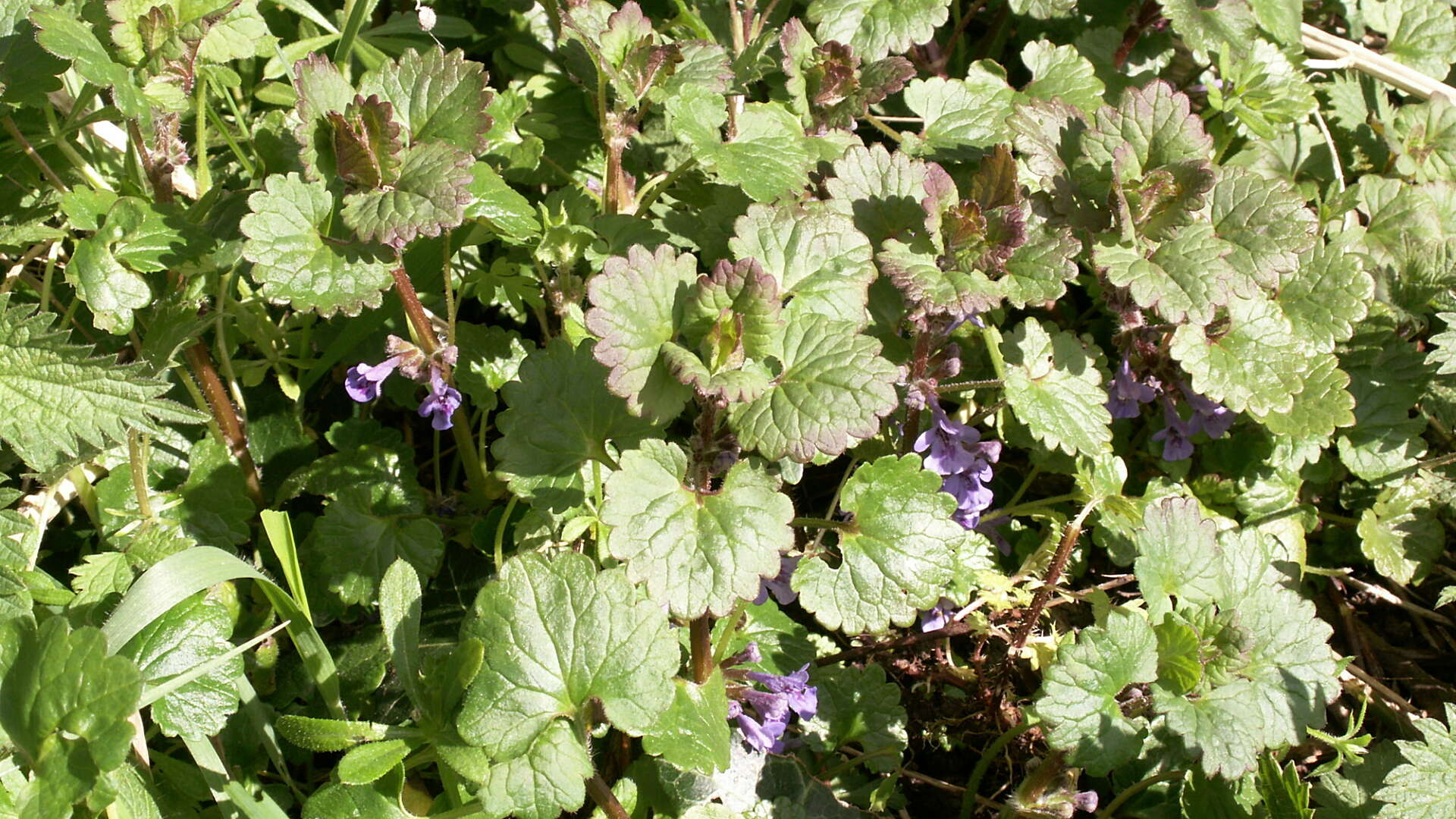Ground-ivy

Other names
ale hoof, creeping Charlie
Latin names
Glechoma hederacea L. (Nepeta glechoma, N. hederacea)
Weed Type
Perennial Broad-leaved Weeds
Where would I find Ground-ivy?
Ground-ivy is a perennial common in hedge banks and found at times as a weed in arable crops and on the margins of arable fields. Ground-ivy is typically a plant of shaded areas and is native in woods, grassland and waste places usually in damper, heavier soils. It is found throughout the UK and is most abundant on sites with bare ground particularly on heavy and calcareous soils. Ground-ivy thrives on soils rich in phosphate and nitrogen.
There is some evidence that ground-ivy can have an allelopathic effect on the plants around it. Before the introduction of hops the plant was used extensively in brewing. It also has medicinal and therapeutic uses. There is a report that it has caused poisoning in horses in England. The plant is toxic if ingested in large amounts either fresh or in hay but only horses are affected. Grazing animals generally avoid it because of the bitter taste.
Biology
The flowers appear in the leaf axils between March and July. The flowers are insect pollinated. The main period for seed set is June. An average plant may have 100 seeds. Seed production is often poor and establishment from seed is rare in most habitats. Seed germination is increased by a period of dry storage.
Regeneration is primarily vegetative. Ground-ivy has creeping stems or stolons. New shoots and roots form at each node along the stolons. The shoots persist for one season. Ground-ivy overwinters as 2-leaved shoots or as 8 to 10-leaved rosettes. The foliage is generally frost hardy but dry conditions can cause wilting and some plant losses. Growth restarts from April onwards.
Does Ground-ivy spread easily?
Most seeds remain viable in soil for only a short period but a small number may persist for long periods.
The seeds are passively dispersed. On contact with water the seed coat becomes mucilaginous and seeds will stick to most surfaces.
Vegetative spread is rapid. Ground-ivy forms patches by rapid stolon extension and in this way is able to infiltrate other vegetation. Runners can be over 70 cm long. The creeping stems root at every node. Detached shoot fragments may be important for long distance dispersal.
How to manage Ground-ivy organically
Ground-ivy is not usually a problem on arable land but in the past it has been found in quantity in lucerne. Thorough cultivation should eradicate it.
In grassland, ground-ivy is found in disturbed areas around rabbit warrens. The plant is generally avoided by rabbits. In roadside verges, increased cutting frequency reduced the occurrence of ground-ivy.